The anime gold rush in the early 21st century
The early 21st century gave way to many Japanese animations in the U.S. While some of the animated TV shows, or anime, were successful at the time, many were not. In fact, according to the Anime Encyclopedia, “The early years of the 21st century could be well characterized by a rush to keep the Western Pokémon-boom generation watching anime as they grow up.”
Most likely, anyone of the many who grew up watching a few of the cult classics most likely grew up to love it and want more. Some of the cult classics that are still known and talked about today are: Pokemon, Digimon, Yu-gi-Oh!, Sailor Moon, and Dragon Ball Z. Sure there are plenty of others, but these are the basic five mainstream Japanese animations from the early 21st century that still have a grip on society today.
There may be different reasons as to why or who likes what anime in specific, but this article will cover these particular five, their Americanization, as well as the top three American values that each portray. American values are very important as to what helped the success of the rush of anime in the early 21st century. Though, there are other things to keep in mind that went into each anime series success in the U.S.
American Values in a Nutshell
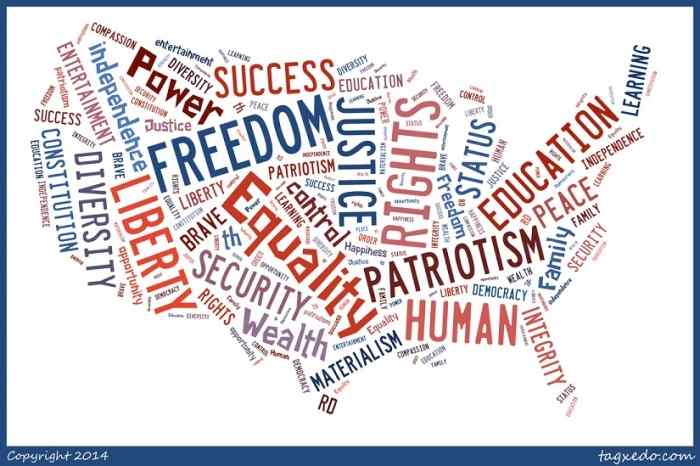
Understanding the values of America is definitely important when going forth to read further. As many people come to America, or have come to America, searching for the American dream. The American dream consists of everyone having the equal opportunity to achieve success and prosperity. Within this dream, core values can be determined. The top ten core values are as follows: individualism, equality, materialism, science and technology, progress and change, work and leisure, competition, mobility, volunteerism, and action and achievement.
To further discuss these ten. or to simply understand their aspects, continue to read on.
Individualism is the belief that every person is special and unique. There’s a lot of emphasis on individual motivation and initiative, as well as, individual expression, the need for privacy, and independence. Equality is treating everyone as an equal. Materialism is everyone’s need and right to be well off. It is also, being comfortable with the life someone has, though, it can be and is judging a person by what they own.
Science and technology is a major factor in change; it values scientific approach and sees it as a primary source of good. Progress and change has to do with the self but also the country. Changing one’s self, thinking of this destiny everyone has. In a sense, it’s about knowing that whoever a person is, that person is meant for something greater that will not only change themselves but could have an effect on their country or the world. It’s the whole, nothing is impossible approach.
Work and leisure has a lot to do with eight theories of motivation, maybe not in a literal sense, but in a sense where our highest form of need are needs that are psychological. That our highest form of motivation comes from having a desire for stability, safety, and to satisfy hunger or thirst first. Therefore, with the help of an uneasy tension, someone is motivated to take action, perform, have strong work ethic, and be recognized for it. While the leisure part in the value is our reward for our performance, but being a loafer or a low performer is a threat to society.
Competition is having a “be first” mentality, where in most circumstances, having an aggressive and competitive nature is encouraged. Mobility is simple; it’s moving physically, socially, or even economically. An example is when someone says, “That person is moving up in the world.”
Volunteerism is a personal choice to help others. Lastly, action and achievement oriented is not only about getting things done, but also about planning and setting goals.
When reading through these, anyone can see that many go together are in similar to one or another. Though all come together and form the American dream. In which case, many Japanese animations portray these values. As mentioned before, there are other aspects that went into the success or failure of the Japanese anime series in America. In the next section each anime TV series will be discussed further through its appeal, its Americanization, and the top three values they portrayed.
Dragon Ball Z
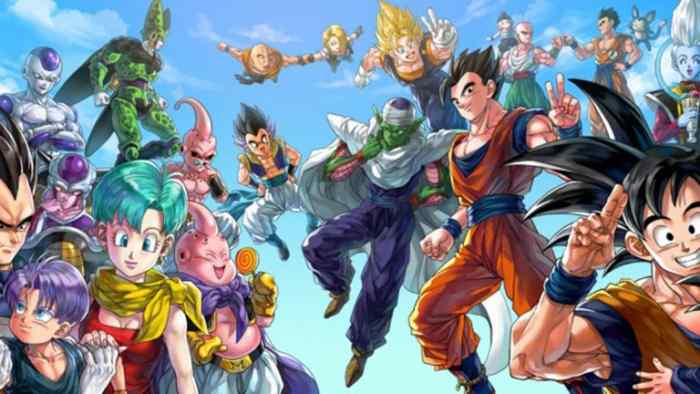
Dragon Ball Z’s predecessor Dragon Ball was popular in Japan in the late 1980’s, but the same couldn’t be said in the U.S. Dragon Ball was eventually ditched by the distributors and relaunched with Dragon Ball Z. Dragon Ball Z is set three years into the future. Goku, the main character, was once an orphan taught by the Master Kamesennin, also known as Roshi, to be a martial artist. Now, in Dragon Ball Z, he is married and with a son named Gohan.
While all Japanese animations heavily appealed to the American audience through their beautiful artwork and plots, Dragon Ball Z’s appeal comes from the strength of its characters and their fight scenes. Through this, the top three three core values are seen and understood.
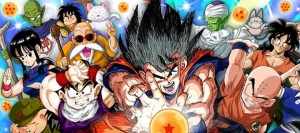 Individualism represented in Dragon Ball Z is shown by each character having different levels of strength, but they still play a specific role throughout the show. Furthermore, Goku and the Z fighters always trained hard enough to improve themselves in order to defeat the antagonists. This can also be an example of work and leisure. Whereas after the Raditz arc, Goku sacrifices his life travels through the underworld searches for being named King Kai in order to train and become even stronger. Through this, action and achievement is revealed, but also, throughout every arc the Z fighters never give up and beat every antagonist.
Individualism represented in Dragon Ball Z is shown by each character having different levels of strength, but they still play a specific role throughout the show. Furthermore, Goku and the Z fighters always trained hard enough to improve themselves in order to defeat the antagonists. This can also be an example of work and leisure. Whereas after the Raditz arc, Goku sacrifices his life travels through the underworld searches for being named King Kai in order to train and become even stronger. Through this, action and achievement is revealed, but also, throughout every arc the Z fighters never give up and beat every antagonist.
Originally, the original run of Dragon Ball was not popular in America, this was seen when the distributors dropped the original and relaunched Dragon Ball Z instead. Goku was originally named Zero in the original TV adaptation of the Japanese animation. In fact, Harmony Gold USA licensed the anime and renamed all the characters. The anime had a test run with five episodes and marketed in several US cities, but was never broadcasted to the general public.
In 1995, Funimation acquired the license and edited the previous content, but after thirteen episodes they cancelled the series due to low ratings. The editing is what helped conspire the failure of the original series. Though in 2001, Funimation announced that they would feature Dragon Ball with less editing on TV. Most of the English-dubbed TV series was left uncut, with original background music intact. Moreover, in Dragon Ball Z, some violence and nudity were edited out but the anime still stayed popular.
Sailor Moon
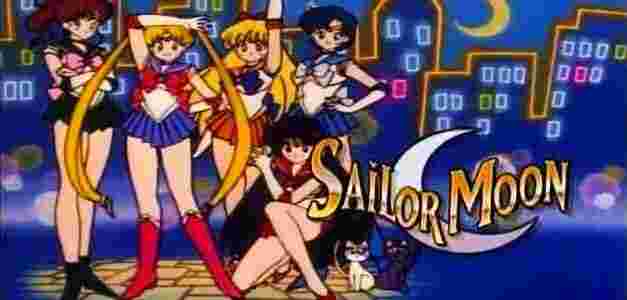
The storyline appealed to and drew in girls of all ages, with the anime focusing on material necessities. Becoming a magical girl from being a normal girl was something everyone could relate to and want to be. For instance, a talking cat Luna gave Serena (Usagi Tsukino in the Japanese version) magical-girl items, a wand and a tiara, as well as superpowers to help her transform.
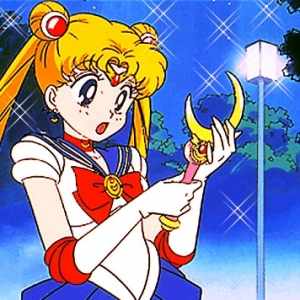
Materialism in America is a standard everyone grows up with. In particular, girls grow up with beauty standards. They see their mothers, sisters, friends, putting on makeup and using products and materials to become beautiful. Also, using tie-in products from the show helped the show succeed because young girls started to think, “I want to be a magical girl! I need these items.” Unfortunately, the media didn’t realize fast enough how important materialistic tie-ins were important for the success of the show. Which also led to Sailor Moon’s failure in America.
Moreover, progress and change is also one of the core values. Serena is the reincarnation of the moon princess sent down to Earth by her mother. She only finds out about her past and what her destiny is after she, once again, forms her sailor soldiers. While Tuxedo Mask, her lover, is also a reincarnate of her soulmate from her past life. Tuxedo Mask or Mamoru, was Prince Endymion, prince of Earth during the Silver Millennium when Queen Serenity, Serena’s mother, ruled. In the second season, she learns not only is she going to have a child, but she also learns that Mamoru is her husband. Furthermore, she sees the many things she has yet to accomplish, but the great things she will, and she does. Especially for the wellbeing of those she cares about.
Lastly, the individualism in the American Sailor Moon and the Japanese Sailor Moon has some key differences. Unlike the American version, in the Japanese version of the show we see some homosexuality. For example, in the Japanese version Sailor Uranus or Haruka Tenou (Amara Tenoh in the English adaptations) is somewhat of a butch character. She leads Usagi on at times so much so you can see a bit of a crush forming. In the English version, a lot is edited out as it was viewed unsafe for children. Though, in both versions, we see the individualism each character possesses. Serena, and her Japanese counterpart Usagi, for instance, is a crybaby.
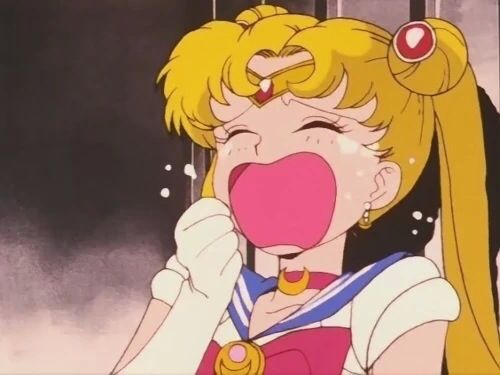
Pokemon
Pokemon had a certain way of capturing the audience. Not only was it directed towards children of all ages, but the toys, the video games, the tie-in TV show, and the trading card game is what helped the anime flourish.
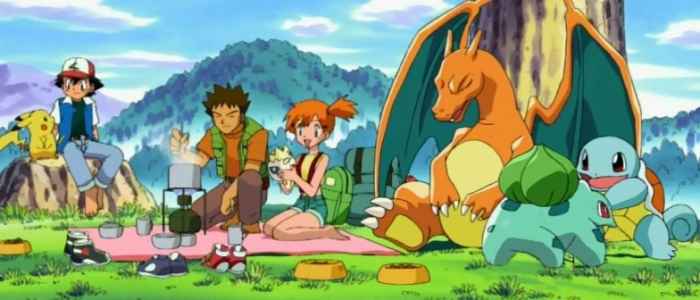
Besides the original artwork having much more of an appeal than the cartoons that were made by Americans, children enjoyed the plot line, the friendships, the idea of becoming the very best, and having help from animal-like friends on their journey.
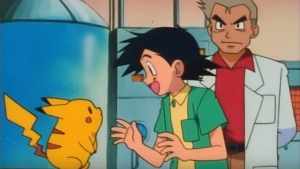 Though, the names of Pokemon and the characters names as well were changed. It was not because they’re anti-Japanese, but rather for the purpose of marketing. In fact, Pokemon came to the U.S. following the news of an episode that caused many cases of epileptic seizures in Japan. It all started with a boy named Ash (Satoshi) who woke up late to get his starter Pokemon. When he finally reaches Professor Oak’s lab, Ash learns that all the starter Pokemon that are most coveted by children are gone. Though, he wasn’t able to get one, Professor Oak informs him there is one Pokemon left. This was an electric-mouse named Pikachu.
Though, the names of Pokemon and the characters names as well were changed. It was not because they’re anti-Japanese, but rather for the purpose of marketing. In fact, Pokemon came to the U.S. following the news of an episode that caused many cases of epileptic seizures in Japan. It all started with a boy named Ash (Satoshi) who woke up late to get his starter Pokemon. When he finally reaches Professor Oak’s lab, Ash learns that all the starter Pokemon that are most coveted by children are gone. Though, he wasn’t able to get one, Professor Oak informs him there is one Pokemon left. This was an electric-mouse named Pikachu.
At the beginning of the series, Pikachu is seen to be very stingy and doesn’t like Ash. Though Ash is determined even when Pikachu electrocutes or hurts him in the process. Ash takes it upon himself to take care of Pikachu and defend him regardless. This is seen when Ash jumps in front of a flock of Spearow to defend Pikachu and then rushing Pikachu to the Pokemon Center to be healed. After this matter, Pikachu starts to open up to Ash a bit more and their friendship is formed, but throughout the series, Ash still gets a electrocuted. Through this, we see one of the most common core values, individualism.
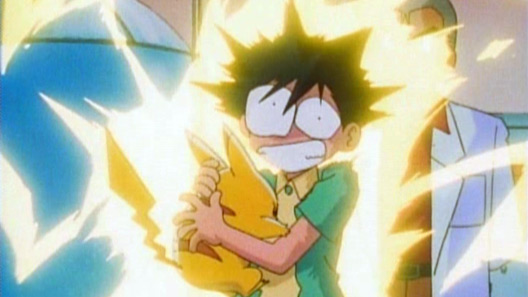
Though it doesn’t stop there; every character within Pokemon has their own personality and sense of self. Each character and even two of the same Pokemon do not have the same personalities. Which is what leads to the core value, equality, playing a big role in the series as well.
A lot of this is shown when Ash and the gang are constantly fighting Team Rocket. Team Rocket are the bad guys within the first season of the show, that late follow Ash and his friends trying to always steal Pikachu. Though they also want to steal Pokemon for the own selfish gimmicks.
Ash is constantly fighting to get the point across that Pokemon are their friends and not something they use to fight with. Pokemon and humans help each other out. Furthermore, Ash and his friends also treat others as their equals as well, and will do whatever it takes for others to see the same. Also, Ash is always meeting these legendary Pokemon that have seemingly lost their faith in humanity, but then they meet him, they realize there’s still hope, and there’s still good people out there.
On the other hand, competition is also a value within the show. The way competition is shown though makes it good competition. In general, the first theme song to the English adaptation had the lyrics, “I want to be the very best, like no one ever was.” That’s basically what sums up Ash in a nutshell, and it is what sums up the games that tie-in as well. Ash goes on a journey to become a Pokemon master, no matter how many times he fails or something happens, it doesn’t diminish his spirit.
Yu-Gi-Oh!
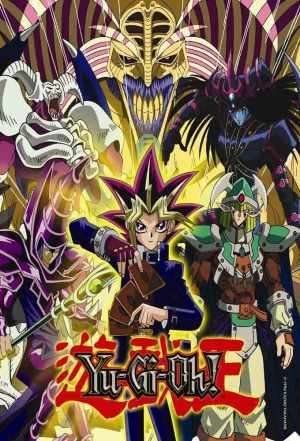 Like Dragon Ball Z, Yu-Gi-Oh had a predecessor. The original 1998 series was never shown in America. Instead, Yu-Gi-Oh! Duel Monsters, or better known as Yu-Gi-Oh! in America, was the second series in the franchise and the one most people know of today. It is based off of the manga, loosely, from chapters sixty and onward. In 2001, 4Kids Entertainment obtained the rights to the television series and the merchandise that corresponds with it. The adaptation of the show received many changes to make it more suitable for children, as well as changing the names of characters and monsters to changing the appearance of some of the cards.
Like Dragon Ball Z, Yu-Gi-Oh had a predecessor. The original 1998 series was never shown in America. Instead, Yu-Gi-Oh! Duel Monsters, or better known as Yu-Gi-Oh! in America, was the second series in the franchise and the one most people know of today. It is based off of the manga, loosely, from chapters sixty and onward. In 2001, 4Kids Entertainment obtained the rights to the television series and the merchandise that corresponds with it. The adaptation of the show received many changes to make it more suitable for children, as well as changing the names of characters and monsters to changing the appearance of some of the cards.
All in all what made the show appealing was the mythical creatures and the special effects used in summoning them. In addition to this, the tie-in and mechanics of the game helped make it appealing as well. Therefore, one of the values noted is competition. Competition is seen throughout the series in the form of duels. The duels consist of the card game tie in, whereas a monster would go from your hand to the playing field in your choice of attack or defensive move. When a card is destroyed or discarded, it is moved to the graveyard. There are also other cards besides just monster cards.
Since there were a variety of cards that were created, each character had their own specific deck crafted by themselves. This is an example of the value of materialism. Where many people and characters covet certain cards over others to complete their own personal deck. Personal decks can range from cute monsters to warriors, as well as dragons and other mythical creatures. Though also, Yugi, a Japanese boy who is victimized by bullies, is obsessed with the ancient Egyptian millennium puzzle.
Through the puzzle, Yugi acquires a second persona that he can transform into. The persona can be quite vengeful, especially when dealing out retribution. Though Yugi’s alternate persona teaches him and makes him stronger. The main idea behind Yu-Gi-Oh! is about Yugi and his friends off on an adventure. Therefore, in each duel or situation Yugi faces, or either of his friends feel like hope is lost, they always support each other no matter the situation. In which case, this is an example of volunteerism.
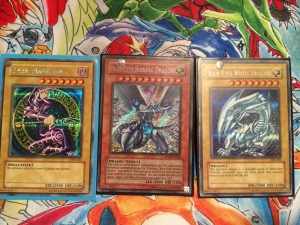
Digimon
Digimon came out following the Pokemon gold rush. There was very little editing or cutting of the original versions done because of how close the Japanese and American schedule was put together. It transitioned very smoothly because children were already accustomed to Pokemon and having a buddy to fight the bad guys with. Moreover, the characters in Digimon were first strangers that were chosen to become the “digidestined” to save the digital and real world from evil. It seemed as though the series appeals to a child to be able to get away from their regular life to that of a different world, have a buddy, and be destined for something greater. “Digivolving” with their monsters made them stronger and more appealing. Though also, the merchandise tie-ins and trading cards also helped.
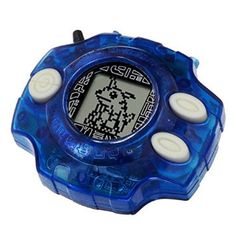 The original digidestined all have some kind of background story to them. They all have something in their past that has made them who they are today, and going through the series, becoming friends with the other digidestined, having to learn how to have teamwork, and trust in their digimon helps them grow out of whatever they angst they had. Through this we see their progress and change. Without learning from each other or from their digital monster counterpart, they would be unable to save the digital and real world.
The original digidestined all have some kind of background story to them. They all have something in their past that has made them who they are today, and going through the series, becoming friends with the other digidestined, having to learn how to have teamwork, and trust in their digimon helps them grow out of whatever they angst they had. Through this we see their progress and change. Without learning from each other or from their digital monster counterpart, they would be unable to save the digital and real world.
Science and technology is also a main value in the series, and seems like a no brainer. This is because they have to destroy the black gears inside of good digital monsters that are making them rampage, to make them good again. Without science and technology, there wouldn’t be a digital world to need to protect. Yes, there’s mobility, and other American values, but without having their digivice digivolutions, which is what makes them stronger to fight the evil, the black gears, they would still be stuck in the same place.
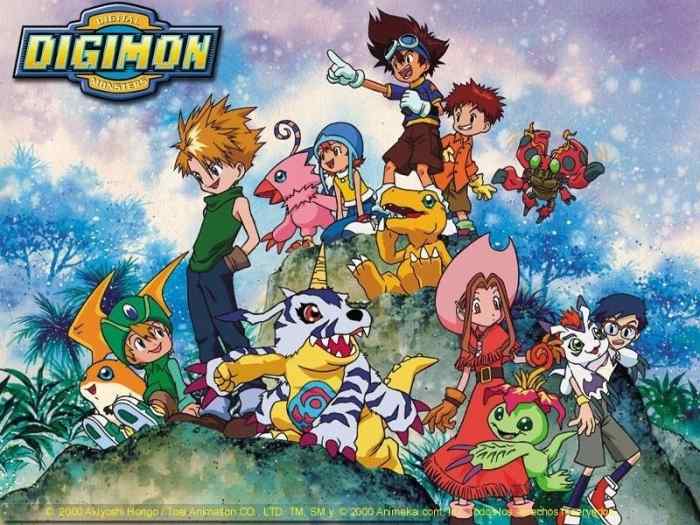
As the most common value in every series, individualism holds true in Digimon as well. The most common theme between Japanese anime characters is the fact each character is very relatable to one person or another. For example, Tai is happy-go-lucky and adventurous, while Matt (Yamato in Japanese) is somewhat of a brooding character. Matt comes off as the cool guy or a loner. Mimi is spoiled, has been pampered all her life, and Sora, is the calm, collective, and responsible type. Izzy is a computer expert, sometimes has his head in the clouds trying to figure something out, but is always curious about the digital world. Joe is a worrywart. T.K. is the youngest out of the group, he can be naive and doesn’t see the big picture, but he tries his best to keep up with the group and keep everyone from fighting.
Many aspects go into the success and failure of a Japanese animated series in America. The American values are just as important as all other aspects. All in all, the main value seen in every anime is individualism. Individualism has an established emphasis on the sense of self, and any anime from then or now portrays that. There are many American values in these Japanese animations, but peering through the top three gives us a better understanding of our own American dream.
Works Cited
“Anime In America | Japan — Business People Technology | Www.Japaninc.Com”. Japaninc.com. N.p., 2016. Web. 29 Nov. 2016.
Clements, Jonathan and Helen McCarthy. The Anime Encyclopedia, 3Rd Revised Edition. 1st ed. New York: Stone Bridge Press, 2015. Print.
“Digimon”. En.wikipedia.org. N.p., 2016. Web. 29 Nov. 2016.
“Dragon Ball Z”. En.wikipedia.org. N.p., 2016. Web. 29 Nov. 2016.
Kageyama, Yuri. “Anti-Disney Style Of ‘Manga’ And ‘Anime’ Appeals To Americans | The Japan Times”. The Japan Times. N.p., 2016. Web. 29 Nov. 2016.
“Pokémon (Anime)”. En.wikipedia.org. N.p., 2016. Web. 29 Nov. 2016.
“Sailor Moon (Anime)”. En.wikipedia.org. N.p., 2016. Web. 29 Nov. 2016.
“Yu-Gi-Oh!”. En.wikipedia.org. N.p., 2016. Web. 29 Nov. 2016.
What do you think? Leave a comment.


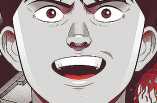

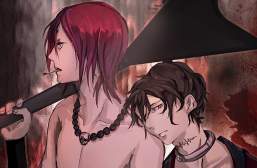

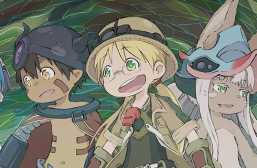
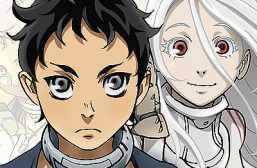
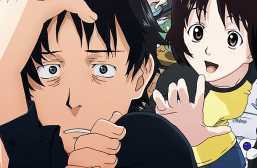
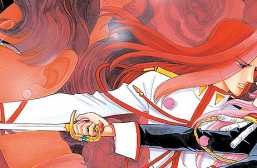
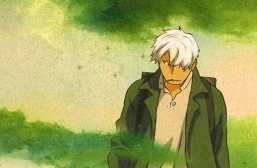
I might be aging myself here but i actually watched the original Dragonball first cuz my sister was flipping channels and stumbled upon it. she didn’t care for it but i was hooked the first time i saw Roshi show Goku the Kamehameha Wave…and then Goku did it pretty much on the first try right after Roshi showed it to him and his jaw hit the floor lol…
As for DBZ where do i begin, i’ve loved every minute of this this show. One of my favorite moments is when Goku uses Kaioken against Vegeta and shot his Kamehameha wave against Vegeta’s Galick Gun.
What’s your favorite moment of DBZ?
I think the moments that stood out for me was when they sensed Frieza was still alive, I was like: “You have got to be kidding me! How?!” And then he died. But after fighting the Androids, they sensed Frieza again which freaked me out even more! But it turns out that was just Cell who then drank some guy’s blood. That fucked me up as a kid. 😀
The only thing I hated about DBZ was the Raditz arc. Everything before Raditz death annoyed the crap out of me. I guess you can also say I did not like the direction taken with Gohan either. He was so bad ass and then became a wimp. He is one of the weakest fighters going into Super. He was useless in GT as well as were many other characters other than Goku and Vegeta.
Oh, Man! Soooooo many!
If I were forced to choose only one, I guess I would go with the one where the dude with big hair screams for 5 minutes straight while powering up a super move. Then, he unleashes it and a huge explosion engulfs the dude with no hair completely destroying him….. BUT WAIT! As the smoke clears, the guy with no hair walks out of the smoke without a scratch on him! He then proceeds to power up for 5 minutes unleasing an even bigger blast on the big haired dude completely obliterating him… BUT WAIT! He too steps from the smoke unscathed! They both go about screaming and powering up simultaneously for 10 minutes and then fire their super ultimate special mega-moves at the same time. The credits roll and we are left hanging until the next episode.
Yeah… That is certainly my favorite one.
The most memorable moment out of Dragon Ball would be when Gohan became the hero, other than Goku all the time. The funniest moment out of Dragon Ball would be when Bulma had no underwear on and accidentally showed Master Roshi her vagina. The saddest moment out of Dragon Ball would be when Future Trunks lost his mentor Future Gohan and became the only Saiyan & Super Saiyan in his city to fight against the Androids.
Vegeta’s sacrifice and the first time Goku went Super Saiyan
My favourite memories are watching the original Dragon Ball with my sister on Saturdays with pizza. We were enthralled by the adventures of Kid Goku traveling around the world on the Flying Nimbus collecting the Dragon Balls. Character adventures top mountain punch fights any day for me.
When Goku finds out that the guy with the bunny mask that was kicking his ass is his grandfather Son Gohan T.T
When King Piccolo killed Shenron I shit myself. One of the most bad ass moments in Dragonball history.
I remember visiting my relatives in Mexico during family vacations as a kid, and watching the afternoon airings of Dragon Ball dubbed in Spanish with my cousins and sister surrounding the TV. Man, that country sure loved it’s Dragon Ball!
Yes dragon ball is probably the most popular show of all time in Mexico, even my dad who is 56 years old knows the name of the techniques, and his ravorite character is Picollo
This article makes me feel old.:)
I need a live action Sailor Moon in North America she better let this happen I’ve been watching since age 4 and I’m almost 20
Sailor Moon’s and Pokemon?
Digimon is way better than Pokemon.
Back before Funimation dubbed DBZ when it was still niche. Getting suprsised when one Christmas my brother and I were surprised when our mother bought us a bunch of Dragon Ball Z action figures.
This is pre Amazon, when they had to order through the phone and import the figures from Japan based on an offer in the back of an old Game magazine.
Worst part is my brother and I discovered the toys in our parents’ trunk about two weeks before Christmas. The wait was agonizing!
I remember being 7 or 8 years old when the pokemon anime released and I thought it was the best thing I had ever seen. I also remember seeing Pokemon the First Movie when it first released. But I never did get that Mew card….
Anyone else still play Pokemon up to this day?
i still have the first 5 original pokemon games for the game boy red blue yellow silver gold, i was actually thinking about selling them.
I play even now, when I m bored of day to day activities.
Naruto is my favorite anime and Bleach is my #2. I love running into people who also watch anime… believe it or not I watched all of bleach and all of shippuden 0.0
The original Sailer moon is the best
pokemon is okay. they just need to hurry up n have ash grow a year older.
A friend of mine and I were so sick and tired of kids picking on us because we loved Pokemon, that we actually sung the original PokeRap in the school talent show. No one made fun of us for Pokemon again. This was back in 2000.
I have never been hit with nostalgia so hard before! honestly, If i were to watch some of these shows again it would be so hard to watch them without deconstructing them like you have done here! Great article 🙂
As a huge Sailor Moon fan I must say: thank you for including it in your list.
The fact that Ash never ages freaks me out. He’s been 10 for so many years.
I remember playing an incredibly difficult NES game called “Dragon Power.” And then putting two and two together some fifteen years later and figuring out it was a Dragon Ball game.
I am so glad to see this get published! Well done Diana!
Dragonball/Z/Super + Sailor Moon/Crystal
Sailer moon is so beautiful.
Pokemon is the first anime and thing I ever watched in my life
interesting viewpoint on Sailor Moon
Digimon are still the champions!
I loved Sailor moon in my Middle school and highschool years. … such a cool saga. This was a very interesting view on it and I do agree that it wasn’t as successful in America. Even though I found it one of the most awesome shows ever! I
Such an insightful look into these anime that are so close to my heart, especially Dragon Ball Z and Pokemon.
Considering the global appeal of most of these anime (we Indians love them too), aren’t these values something almost all cultures and communities share?
This article was one big nostalgia trip for me. I loved all of these growing up and am actually re-watching all of Cowboy Bebop now that my exams have finished up. Keep up the great writing and I cannot wait to read more.
I watched all of these as a kid and have revisited a lot of them again as an adult, to see how my opinion on the characters/plot/etc has changed. It’s a really insightful thing to do and I wish a lot of adults didn’t feel inclined to completely abandon things they used to love because they equate that as growing up. Cartoons/anime can be for everyone!
the originals are always the best…
Yu-gi-oh, pokemon and DBZ both the shows and games were/are amazing
I have found in my experience that many hardcore fans of anime and especially anime snobs will often not hold anime like Pokemon and Digimon in high regard due to their intense mainstream appeal and highly commercialised nature.
To those people, I think it is important to remind them of something. The international success of shows like Pokemon, Digimon, Yu-gi-Oh!, Sailor Moon, and Dragon Ball Z, proved that anime had a place in West, and could be commercially viable. I doubt that we would have a lot of the ‘serious’ and niche anime in the Western world if it wasn’t for Pikachu and Goku.
In this manuscript the term “technology” is used incorrectly. Confusing usage of the term ‘technology’ is notorious even in engineering and scientific publications, not to mention the rest of literature. It appears that numerous sources, including the international institutions and scientific journals (such as Materials Processing Technology and the World Wide Web Consortium ) use the term ‘technology’ to address a ‘technique’ or a ‘system of techniques’. Technology is science of techniques.
These anime taught those who were watching them life lessons that can still be applied today.
Anime was also a massive force for the new MTV generation coming up with channels like adult swim
Most of Pokemon’s theme songs are catchy too, which helps with attracting audience to it too I guess.
Thanks for this article – great discussion of some of the big anime of that era (aka my pre-teen and teen years). I used to particularly love Pokemon and Sailor Moon. I like that you pointed to the way the English dub of Sailor Moon (although Pokemon did this too) kind of sanitised anything interesting out of the show. It wasn’t until my partner told me about the Japanese version years later that I realised how the shows had been pitched so differently for different markets.
one of the best anime cartoon.
When Japanese anime was adopted into Western culture, it became more popular than anyone could have anticipated. Most 90’s kids spent their Saturday mornings watching Yu-Gi-Oh and Pokémon. This created large nostalgia among people who grew up watching these anime shows.
So many flashbacks.
Yeah, I agree with most of the points listed here.